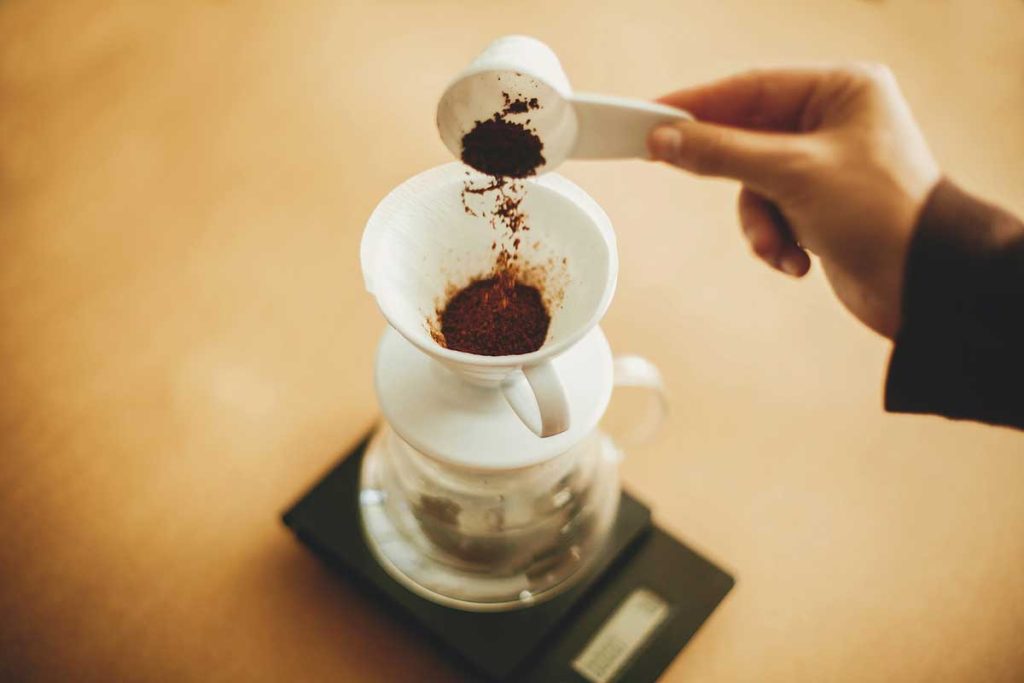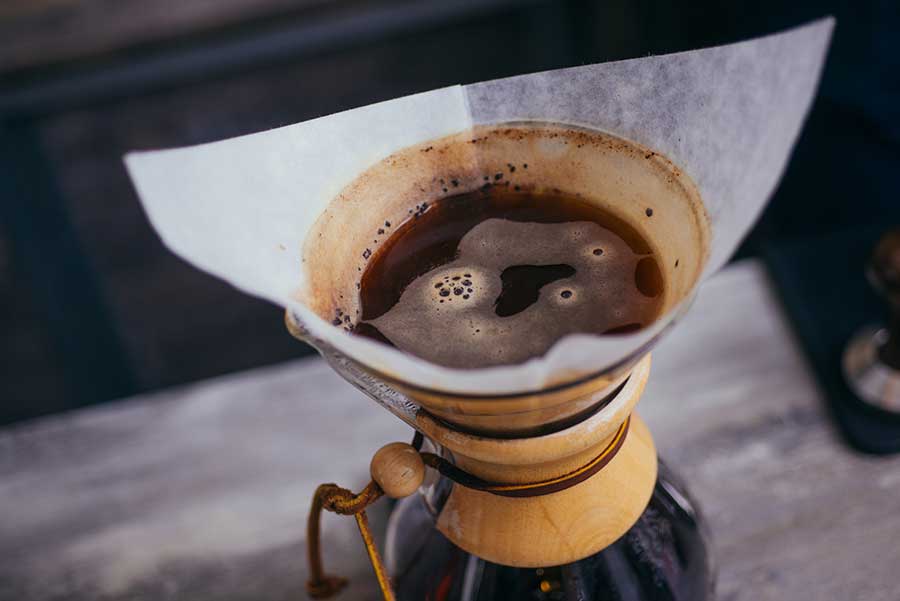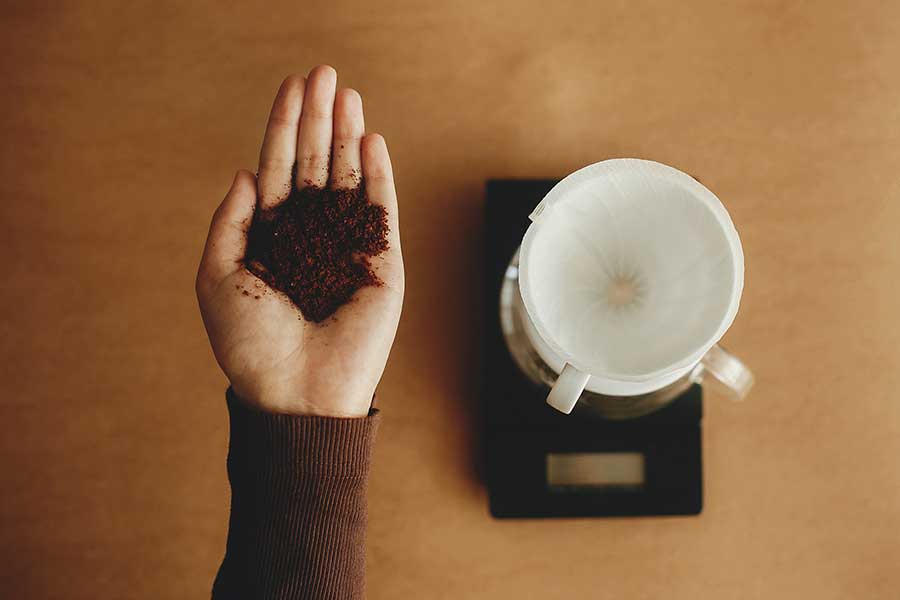Best Grind for Drip Coffee (And Why It Matters)

If you are new to coffee grinding, here’s the first rule to usher you into this space: What’s right for one brewing method may be totally wrong for another. I hope you are here to find out what grind you should use for drip coffee.
Coming here may be the best decision you have made in your effort to make a great-tasting cup of drip coffee. Ignorance is not bliss when it comes to grind sizes. Not knowing the size to use and guessing instead is a sure way to make sub-par coffee or ruin your brewing experience altogether.
To get you started on this journey, I’ll first help you understand drip coffee better before showing the best grind size for it, why this matters, and the choice of grinders to use.
What’s Drip Coffee?
Your brewing style generally determines the grind size you should use. It’s therefore only fair that you first understand the drink before finding out the best grind size for it, so what is drip coffee?
As the name says, this is a coffee beverage made using the drip brewing method. Heated water filters through coffee grounds, extracting a brew that then drips into a cup or carafe with the help of gravity. You can probably already tell it’s one of the easiest coffee beverages to make.
Some people use a drip coffee maker to complete these steps, while others prefer pour overs. Both options make great delicious coffee, but how they do it is what differentiates them.
Most drip coffee makers have most of the tasks automated. You only have to add water and coffee and let the machine work its magic. Pour overs, on the other hand, are more hands-on. You will have to do every task manually, from preparation to brewing. This means you will need some barista-level skills to get everything right.
Brewing styles aside, both options use the same grind size. You may not know this, but the grind size is among the few things that decide how your coffee will turn out no matter what brewing method you use. Get it wrong and you might end up hating the brewing process altogether.
This leads us to the next topic: why does grind size really matter?
Why You Should Achieve the Best Grind for Drip Coffee
Grind size controls the following aspects of the brewing process:
- Contact time
- Extraction time
- Flow rate
Here’s how it happens:
When you grind your coffee beans into finer particles, you expose more surface area which in turn leads to a faster extraction rate. Your beans will therefore need less contact time with the water because coffee flavors can be extracted in a shorter period of time. A finer grind also reduces the flow of water, allowing for more contact during the process.

Coarsely ground coffee beans, on the hand, have a smaller surface area that slows down the extraction rate. More contact time with water is therefore needed for all flavors to be released. Water will also flow through coarser grinds more quickly which makes the extraction relatively fast.
With this in mind, you can guess the grind size to use based on the brewing time of your specific coffee maker. That’s not as easy as it sounds, though, especially if your drip brewing method is hands-on.
Avoiding Over-Extraction and Under-Extraction
These are scenarios you risk dealing with particularly if you are using the pour over method.
If your coffee grounds are too fine or contact time with water is more than enough, you are faced with over-extraction. Your brew will be bitter, bland, and far from sweet.
On the other hand, grounds that are too coarse or have less contact time with water will result in under-extraction, leading to a drink that’s sour and nowhere near delicious.
It’s therefore important that you completely understand how your coffee maker works so you can make a well-balanced cup of coffee.
Drip coffee makers and pour overs generally take anywhere between 3 and 10 minutes to complete a brewing cycle, which gives us a clue as to the best grind size for your drip coffee.
Here’s a chart that sums up for you grind sizes for different brewing methods.
Drip coffee is a fairly light, smooth coffee beverage with a simple flavor profile. All its characteristics primarily depend on the grind size, which is what I’ll be talking about next.
What Is the Best Grind for Drip Coffee?
Looking at the chart above, drip coffee is right in the middle. You will need to grind your beans to medium size (smooth sandy texture) in order to make a well-balanced, great-tasting cup of drip coffee. Any finer or coarser grind than that will ruin the flavor of your drink.
This means that the right grind for drip coffee is medium.
There’s the option to buy pre-ground coffee, which I will agree is the cheaper and more convenient alternative, but you won’t get as much flavor as whole coffee beans.
Whole beans have all the subtle flavors and aromas that disappear when you grind coffee beans and shelve them as opposed to using them right away. Here’s how to go about this.
At the coffee store or shop, ask for fresh whole beans. Depending on your taste preference, you can choose either a darker or lighter roast. Light roasted coffee beans make a fruitier, more acidic coffee, while dark roast coffee produces a bolder, toastier brew.
When it’s time to make drip coffee, only grind the quantity you need. For this task, you will need a grinder that can produce a uniform grind size. That’s another area you also need to know more about and it’s all covered below.
How to Get a Consistent Grind Size for Drip Coffee
Grinders come in different forms and styles, but the two major types you should know are blade and burr grinders. Both can crush your coffee beans to the required size for brewing, but there will be a major difference when it comes to the uniformity of particles.
Blade grinders are the cheapest, but don’t be too excited about buying one just yet. Because they use rotating blades to crush the beans, the best you can get are mixed grind sizes. Some particles will be coarse, others fine, and the rest anywhere in between. The resulting brew from such coffee will not have a balanced taste.
What’s more, the blades tend to heat up a lot during grinding. Let’s not forget that all this time they will be in contact with beans. Chances are therefore high that you could end up with burned beans and this will make your coffee taste bitter.
Burr grinders, on the other hand, do an excellent grinding job. You can set the burrs to your preferred level and they will grind the beans evenly, ensuring consistency in their texture. Baristas love them primarily for this reason. Even though they are more expensive, the grind quality compensates for the price.
Another area that’s least talked about, yet is just as important when it comes to grind size and drip coffee, is the ideal water-to-coffee ratio to use.
What Next After Getting the Grind Size for Drip Coffee Right?
The next challenge you will face after grinding coffee for drip makers is how to mix it with water.

Some drip coffee makers already have this figured out for you. Check the water reservoir for any lines or calibrations that show how many cups you can brew at each level. If the coffee filter and filter basket do not have any indicators, this is where you have to remember the golden ratio.
In the coffee universe, that simply refers to a coffee-water combination that will most likely give you desirable outcomes. It’s 1:15 to 1:18 (one gram of coffee for every 15 to 18 grams of water). If you are using tablespoons, that would be about two tablespoons of coffee for every 6 ounces of water.
For a beginner coffee user, this is the ratio you should start with. If it fails to produce your desired taste, you can adjust the measurements until you find a combination that works best for you and your coffee maker.
Frequently Asked Questions
How do you grind coffee properly?
Each burr grinder requires some tuning to get the preferred grind level. In the case of drip coffee, you will have to find a setting that will get you a medium grind. You can experiment with different sizes until you find the ultimate taste and flavor.
Right after you are done grinding coffee for drip makers, clean the device. Leftover coffee grounds and oils can ruin your next brew if you fail to properly clean the grinder. You can use a damp or dry cloth to wipe it or an old brush to scrub off the stubborn remnants. Avoid soap or any other cleaning agents
Should you wash coffee beans before grinding?
It sounds like an unusual question, but you might find yourself thinking about this when you go shopping for coffee beans, especially if you are disappointed with how the vendor handles them.
Even if the vendor was unhygienic, do not wash your coffee beans. They will absorb the water, soap, or whatever you are using to clean them, and this will ruin their original flavor. In worse cases, it could even be dangerous to consume.
I could understand if you wanted to just throw the beans away and find a new vendor, but if you still want to use the beans, just know that brewing happens at higher temperatures where no bacteria can survive.
How do you make drip coffee taste better?
There’s no magic trick you can use to make your drip coffee taste better; however, there are a few well-known tips you can follow to ensure that you end with a great-tasting brew. I’ll name them below in brief:
- Thoroughly clean your water reservoir and grinder each time to ensure there’s no leftover residue
- Use freshly roasted coffee beans
- Use fresh filtered water (avoid distilled or purified water because it will make your coffee too flat)
Final Word on Grind Size for Drip Coffee
Whether you are using a drip coffee maker or pour over to make drip coffee, always choose a medium grind size. Sometimes you may not get the desired taste and flavor, but that’s not the end of the road. You can adjust the grind to medium-fine or alter other aspects such as batch size until you find the sweet spot.
Don’t forget that there are still a few other aspects of the brewing process you have to get right for the best results, from coffee-to-water ratio to choice of grinder. You can always come back here for reference if you are unsure as to how to go about the brewing.
It may seem like a lot when you are starting out, but it won’t be long before you figure everything out. Just to remind you again, drip coffee is one of the easiest beverages to make. All the best as you venture into this brewing journey!
Owen is a writer and editor at Caffe Streets who considers himself a coffee fanatic. He spends his time researching and testing different coffee beans and brewing methods and sharing what he learns with others.





